If you head into the pipe section of your local hardware store, you’re likely to see a very large array of materials available. And it may not be immediately obvious which one you need for your application.
For our bathroom remodel, I know that we will be using pex tubing to route our new supplies, and using quick connect fittings to join to the existing copper supply lines when they enter the bathroom space. So, there’s only one choice for us here: pex!
But, for drains, there are a lot of similar-sounding and identical-looking parts that have different applications. What are all those for, and which one do you need?
Iron Pipe
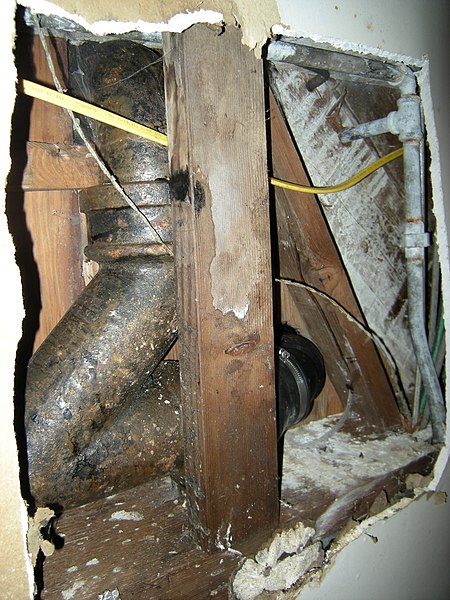
The first one is the most common in older homes, iron pipe. This ranges in size from 2″ to 4″ cast iron (CI) pipes with hubs, and even larger sizes when you leave residential and go to commercial. The hubs on CI pipes are designed so the pipes can be cut to length and installed without threading the end. It would be very uncommon for someone to install iron pipe nowadays when repairing a broken drain or adding a branch, because of its weight (about 8lb per foot for 4″ CI), cost, and difficulty to install (you need to pour molten lead in the fitting!).
But, there are some advantages to iron drain pipe as well. For one, it is the quietest drain type of all. The thickness and density of the walls dampens the sound of rushing water. It also has great fire resistance; iron does not burn! Both of these facts make it a great choice for hotels, apartment complexes, and the like. It also has a lifespan of about 100 years above ground.
It would be rare to see CI pipe in your hardware store. If you do see it, snap a pic because I wouldn’t believe you.
Galvanized Pipe
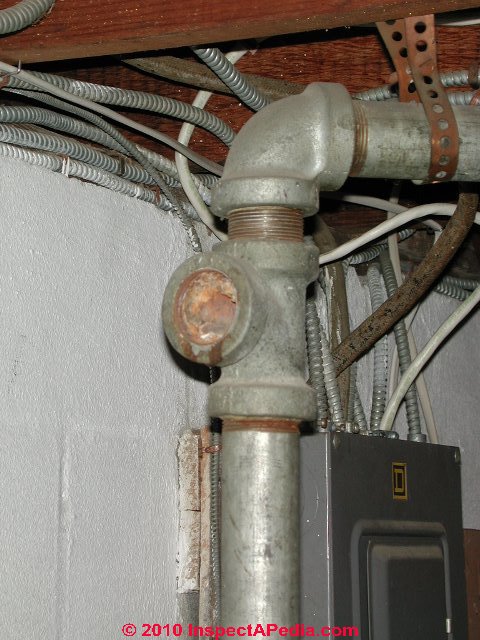
This is likely the type of threaded metal pipe you would see in use for drains. Galvanization protects the iron from corroding with a layer of zinc, making it useful for water applications. This pipe can also do dual duty, acting as a supply or a drain, depending on its diameter. Supply sizes are normally 1/2″ or 3/4″, though 1″ is also available. Drain sizes start from 1-1/4″ and go up to 4″.
Galvanized pipe must be cut and threaded to connect to other fittings, so getting the exact correct length down to the half-inch is important, as is using pipe dope or tape to protect and seal the fittings where they connect. That is because when the pipe is cut and threaded, the galvanized layer is removed, exposing the rust-prone iron. Even so, galvanized pipe is expected to last 40 or 50 years, and can exceed this time-frame when installed well.
Galvanized pipe is much easier to work with, though, than CI, since it is thinner and lighter, and comes in lots of different lengths. You would most commonly see this material used for old sink drains, connecting later on to a larger CI pipe. Replacing it once rusted, however, is a pain. Unscrewing a pipe from its fitting is a gamble.
Installing this for a new drain would still be uncommon, but if sound attenuation is important, I would use this over PVC.
PVC (Schedule 80, Schedule 40, and DWV)
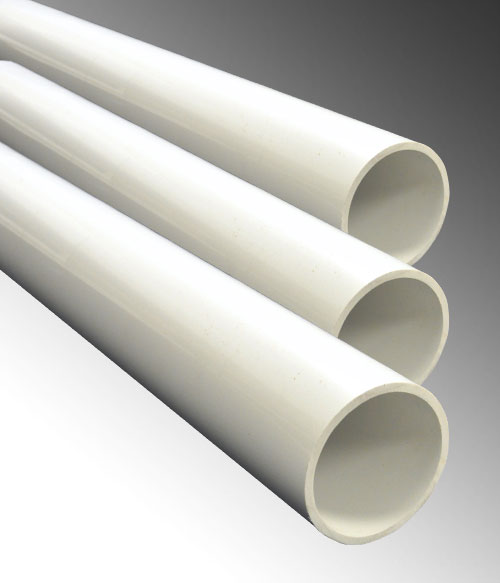
PVC is the most commonly installed new plumbing material. It’s abundant, cheap, light, easy to cut (with any hand saw), and easy to join (with special PVC cement). It also has a life span (when kept out of the sun) of at least 100 years. It can be easily repaired with the same joining techniques down the line, too.
There are three main types of PVC you will see in your hardware store, and it’s important NOT to mix and match. Schedule 80 is the thickest pipe, and can withstand delivery pressures. Therefore, it is most expensive, and is used for supply lines. But, because it is the thickest, it has better sound attenuation.
Schedule 40 is thinner than Schedule 80, and can support lighter pressures, so it’s better suited for residential supply applications (under 600 psi). It’s reduced thickness makes the contents noisier. It is possible to get ‘Foam Core’ or ‘Open Cell’ Schedule 40 pipe to help reduce weight at the cost of even more noise.
Finally, DWV (Drain, Waste, Vent) PVC pipes and fittings are for just that; drains and vents. These are designed to handle only gravity or open air, and are the least expensive of the PVC family. The formulation and thickness is the same as Schedule 40, but fittings have a shallower hub. This is the reason they are not rated for any type of pressure. This is the type of pipe and fitting you should use for all of your residential drain work.
As for disadvantages of PVC, there is the possibility that it could leach chemicals into your water. But, since kept out of sunlight and used only for waste systems, this poses little to no threat. Pipes can also degrade more quickly when exposed to light versus other materials. Again, in a drain situation, pipes would not be exposed. And finally, because of the lightweight nature of the pipe, it is one of the noisiest drain applications.
ABS
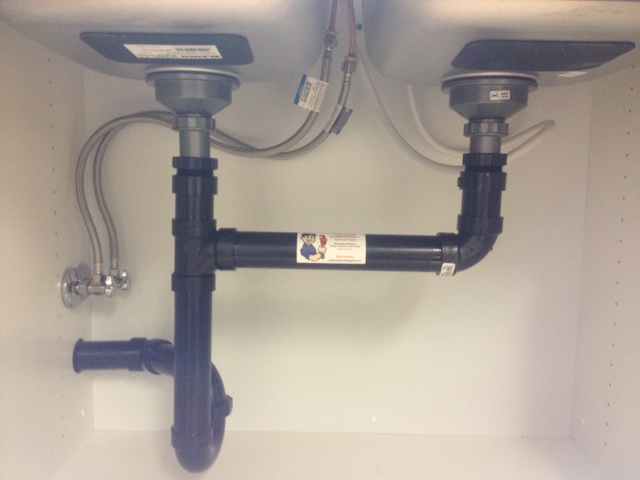
Alongside your white plastic fittings, you may also see black plastic fittings. These are ABS plastic pipes, which need a different glue to PVC, but can be used in the same applications as DWV-PVC. ABS is a sturdier and heavier plastic versus PVC, and therefore is a bit quieter. But this makes it a bit more expensive than PVC. However, in our area, it’s not permitted for install due to fire safety regulations. (PVC melts and smolders, while ABS burns).
ABS plastic is now most frequently found in sprinkler systems, which need a tougher material to be exposed to the elements.
Copper
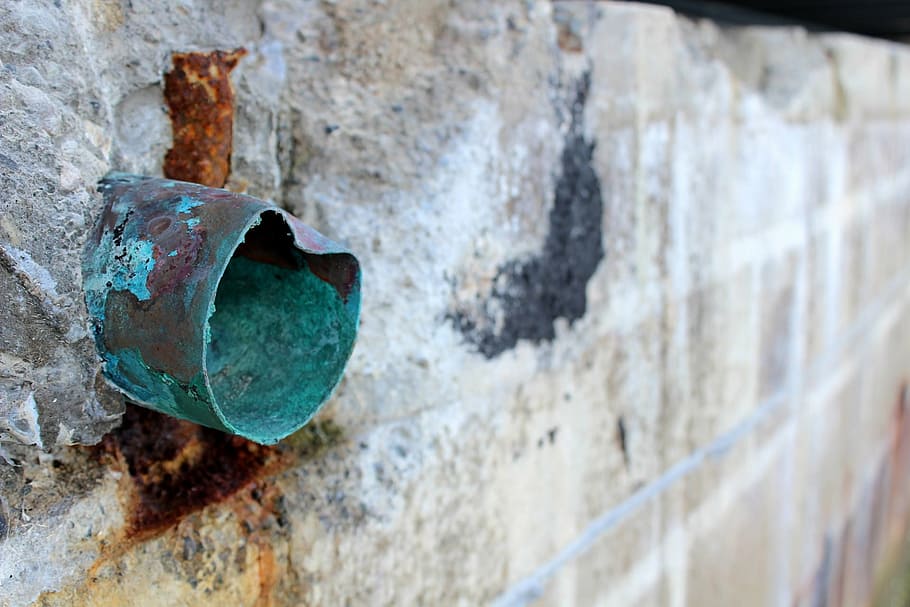
Yep, copper. There’s really no reason to consider this material any longer, but it used to be used for drains as well as supplies. It’s possible at some stores to pick up pipes and brass fittings as large as 4″. But, as it is copper, it’s prohibitively expensive. We’re talking $40 per foot for a 4″ drain. Copper must also be soldered together, which gets much trickier the larger your fitting is.
If you have exposed drains somewhere and really want to make a statement that doesn’t involve chrome, copper is a fine choice. It should last 100 years, and look pretty good in the meantime.
Clay

Ok now we are venturing very far into the edge use case scenario. Clay pipes were often used to connect the iron from the house out to the street. Clay would not rust over time and degrades slowly, and therefore is a good choice for burial. But, clay is prone to attack from roots seeking the delicious water stored within. This causes the pipe to collapse, creating a big wuh-oh accident in your basement.
If you need to replace the pipe from your house to the street sewer, its likely that the installer will use plastic instead.
Concrete

Sure, might as well round it out. Precast concrete is used for city sewer systems. It commonly comes in diameters from 12″ up to 12′. If you are interested in using one of these in your house drainage system, I recommend you seek professional help.
So what will we use?
The existing soil stack pipe, or ‘stack pipe’, in our house is made of iron, so the bathroom originally had all iron fittings. At some point, though, the bathroom was redone, so the iron was removed and a rubber adapter added to transition to a PVC system.
We will be removing all the existing PVC to reroute the drains, so we have our choice of materials. But, because it is easy to work with and very inexpensive, we will continue to use PVC throughout the bathroom, connecting back to that stack pipe with a rubber coupling.
We will use PVC Schedule 40 for piping, along with DWV for the fittings. But since the old drain system was also PVC, I don’t expect much difference to the original noise level.
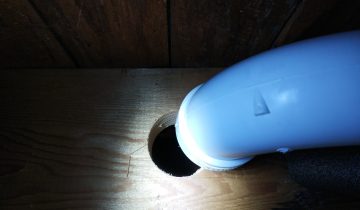
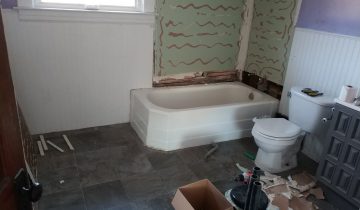
I just discovered your blog on Reddit this morning, and now have read all of your posts. I’m sad to see it’s been nearly two years since you last posted. Are you three ok?
Thanks for reaching out! We have had two kids since lockdown started and construction materials are through the roof, so the hoard took a back seat, but I have updates to share once I have some time to write 🙂